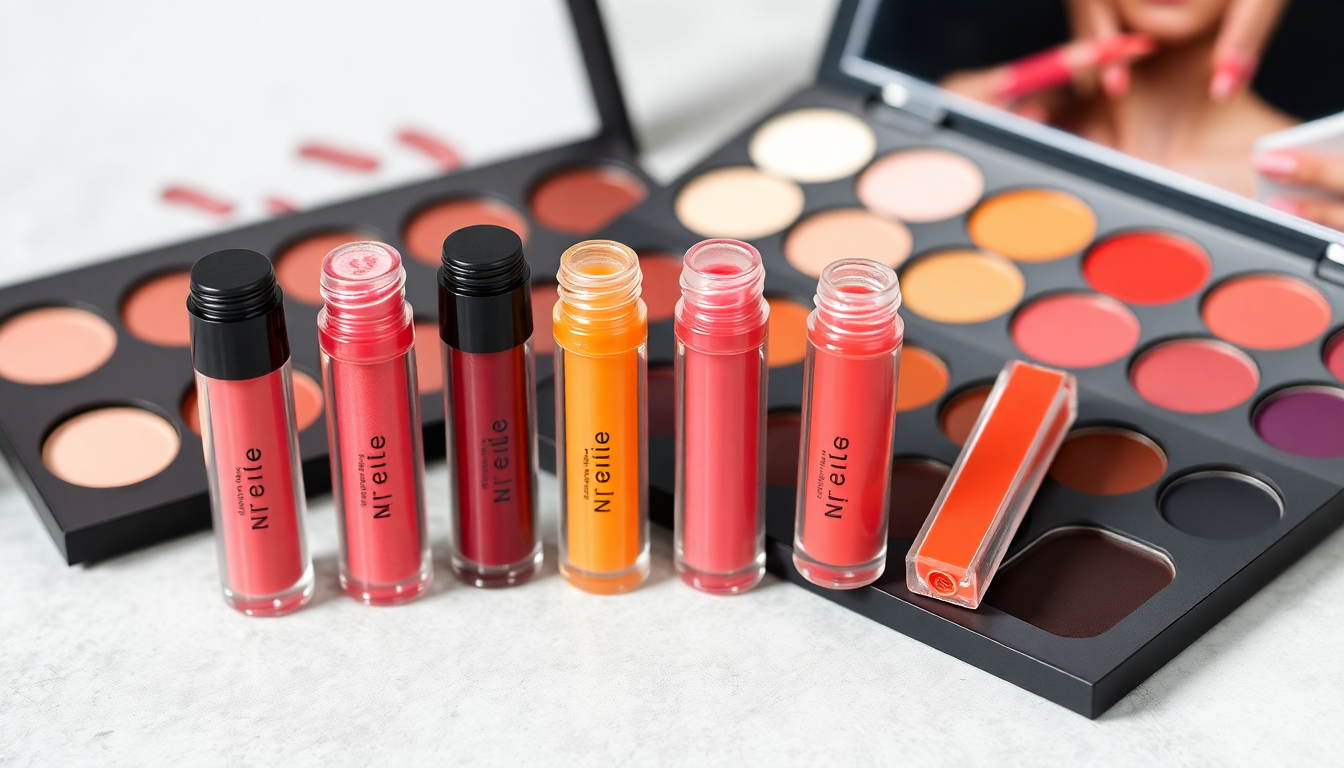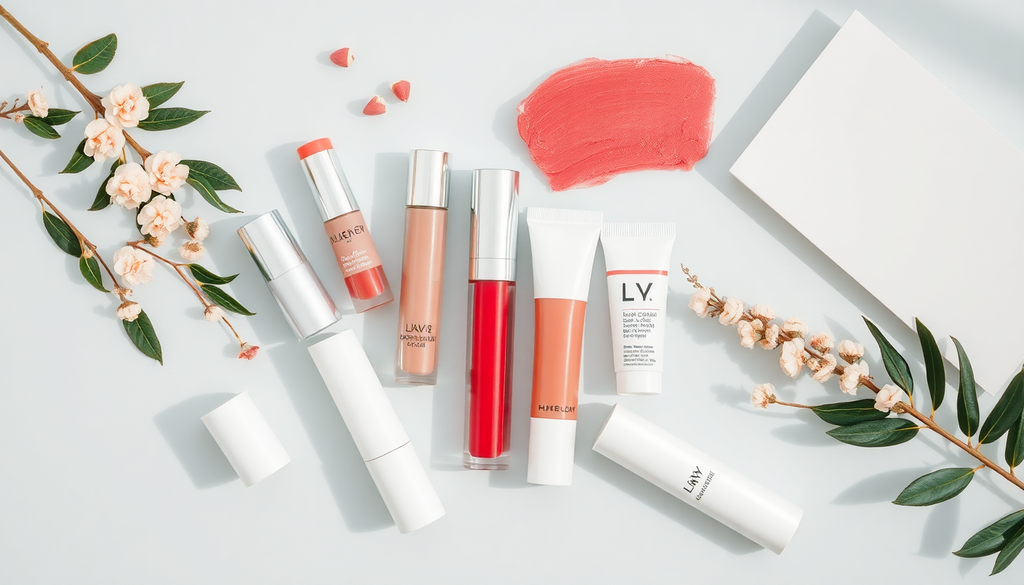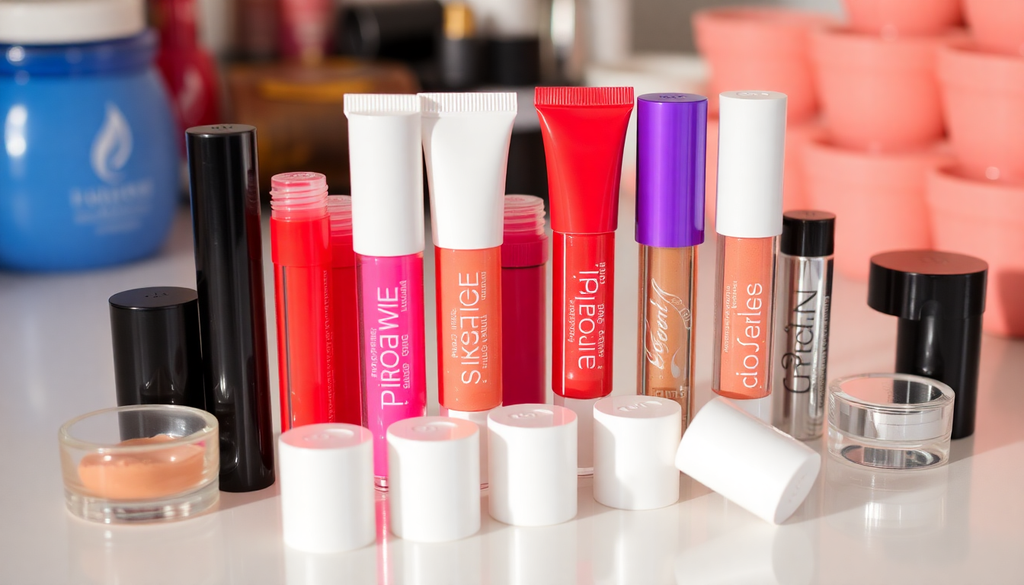
Gloss to Growth: A Manufacturer's 8-Step Roadmap to Launching a Vegan Private Label Lip Gloss with Low MOQs and a 5-Shade Capsule
Ultimate Guide to Launching a Vegan Private Label Lip Gloss Like a Pro
Launching a private label lip gloss line can be one of the fastest, most profitable ways to enter the beauty market. This expanded, manufacturer-driven roadmap walks beginner beauty entrepreneurs through an 8-step plan to create a vegan lip gloss capsule of five shades, while keeping MOQs low and costs predictable. Expect actionable checklists, manufacturer insights, realistic cost ranges, packaging guidance, and regulatory must-dos. Keywords you need to own: private label lip gloss, custom cosmetics, MOQ, vegan lip product.
Why Lip Gloss Is the Perfect Launch Product in 2024-2025
- Gloss revival: Glossy finishes saw a notable rebound in 2024, with some retail channels reporting a 27% increase in gloss sales in Q1 2024. Source: NPD Group.
- Vegan demand: Searches and purchasing behavior for vegan cosmetics have grown consistently; the vegan cosmetics market is projected to expand at a strong CAGR through the mid-2020s. Source: Grand View Research.
- Sustainable packaging preference: Consumer preference for recyclable and bio-based packaging rose significantly through 2024, influencing buying decisions and brand loyalty. Source: Google Trends and industry reports.
These trends make a well-positioned vegan private label lip gloss both timely and scalable.
8-Step Roadmap: Concept to Launch
Step 1: Define Your 5-Shade Capsule Strategy
A 5-shade capsule reduces inventory complexity while providing range and cross-selling opportunities. Think of shade selection like building a capsule wardrobe: each piece must be versatile and complementary.
- Shade 1: Universal Nude — everyday, sheer wash for all skin tones (Pantone ref: 13-1014 TPX)
- Shade 2: Warm Pink — flattering, buildable pink (Pantone ref: 14-1513 TPX)
- Shade 3: Clear Gloss / Topcoat — universal, can be layered
- Shade 4: Rosy Mauve — cool-toned choice for balance (Pantone ref: 16-1610 TPX)
- Shade 5: Soft Berry — seasonal pop with broad appeal
Tip: Launch with one clear and four tinted shades to minimize pigment complexity and testing cycles.
Step 2: Formula Foundations — What Beginners MUST Know
Formulation choices determine wear, feel, and claims. For a vegan lip gloss, prioritize plant-derived esters, vegan film formers, and cruelty-free validation.
- Non-sticky base: jojoba esters, hydrogenated vegetable oils, or methylated esters for slip without tack.
- Shine and hold: vegan-friendly polymers that provide glossy finish and moderate transfer resistance.
- Actives: vegan hyaluronic spheres or peptide alternatives for visible plumping without animal-derived ingredients.
- Preservation: broad-spectrum, low-irritation preservatives suitable for water-containing glosses.
Cost-saving formula tip: Use a single base formula for all shades and only alter pigment loading and actives. This reduces stability testing and manufacturing setup time.
Never skip stability and safety testing. Stability failures are the most expensive surprises in DTC and retail launches.
Step 3: Packaging That Sells — Budget to Luxury Options
Packaging communicates brand value and affects per-unit cost and MOQ. Below are common options with realistic price expectations.
- Budget: PET or PP plastic wand tubes with standard doe-foot applicators. Typical base price can be under 0.80 USD/unit at higher run sizes; low-MOQ shared tooling options may allow 100 to 300 units per SKU.
- Mid-tier: frosted PET or custom-colored barrels with plated collars. Expect 0.90 to 1.50 USD/unit depending on decoration and minimums.
- Premium: glass tubes, metal collars, or magnetic caps increase perceived value, but prices commonly rise above 1.50 USD/unit and MOQs often exceed 1,000 units.
- Sustainable: sugarcane PCR plastics, PCR content PET, and refillable inserts. Prices vary; some sustainable options are comparable to mid-tier at scale but can have higher lead times.
Packaging caveat: custom-wand tooling, metal plating, and glass components are the most common reasons MOQ jumps — ask suppliers about pooled tooling programs.
Step 4: Manufacturing MOQs and Cost Benchmarks
Understand the difference between white-label short runs and true custom manufacturing.
- White-label / short-run: MOQs 100–300 per SKU are common if you select existing formulas and standard packaging. Unit costs are higher but quick to market.
- Custom formulation: MOQs typically 300–1,000+ per SKU depending on packaging complexity, pigment costs, and certification needs.
Ballpark costs (formulation + standard wand tube, low run): 0.90–2.50 USD per unit. Add 20–40% for labeling, design, and testing; premium packaging and certifications will add more.
Step 5: Color Strategy — From Pantone to Profit
Minimize color iterations by giving labs clear direction and Pantone references. Follow this workflow:
- Provide Pantone or physical references and desired opacity level (sheer vs. opaque).
- Request 5 lab dips in small batches; approve one and iterate only if necessary.
- Include shade naming strategy tied to target customer personas to aid marketing and conversion.
Inventory tip: produce larger quantities of your clear gloss and the two highest-velocity shades to reduce stockouts and improve cost per unit.
Step 6: Cost Control Tactics — Manufacturing Insider Tips
Small differences in planning lead to big savings:
- Consolidate ingredients: one base, multiple pigments, and a single preservative system where possible.
- Negotiate packaging tiers and commit to a 2x reorder at launch in exchange for lower per-unit pricing.
- Plan logistics: sea freight is cheaper per unit but adds 6–12 weeks; air freight is faster but costly for low-margin launches.
Hidden cost alert: testing (stability, microbial, safety), labeling translations, certifications (vegan, cruelty-free), and customs clearance can add several thousand dollars to a launch depending on target markets.
Step 7: Regulatory and Quality Checklist
Regulatory work is non-negotiable. At minimum, secure:
- Safety assessment and finished product stability reports
- Ingredient declarations consistent with vegan claims and third-party certifications if you plan to use them
- Compliant labeling for each target market (CPNP in EU, ingredient listing, warnings, batch coding)
Step 8: Go-to-Market and Scaling Strategy
Start DTC to validate product-market fit, then layer into retail. Steps to a smooth launch:
- Pre-launch sampling to influencers and focus groups to collect feedback on feel, shade, and wear.
- Track KPIs: sample-to-purchase conversion, repeat rate, AOV, and sell-through by shade.
- Plan reorder cadence based on lead times: typical low-MOQ suppliers require 6–12 weeks from order approval to delivery; premium components can take longer.
Manufacturer's Corner: How We Make Product Development Painless
Manufacturers offering low-MOQ programs often bundle development services: color matching, small-batch prototyping, basic artwork printing, and QC. Here are extended checklists to use when evaluating partners.
Checklist 1: Pre-RFP (Request for Proposal)
- Define final SKU list and Pantone color refs for the 5-shade capsule
- Set target per-unit cost including packaging, excluding freight
- Identify required certifications (vegan, cruelty-free, organic claims if any)
- Confirm acceptable MOQs and desired lead times
- Budget for testing: safety, microbial, and 3-month accelerated stability at minimum
Checklist 2: 10 Questions to Ask Any Supplier
- What is your minimum order quantity per SKU and per packaging component?
- Can you provide sample stability and safety reports for similar products?
- Do you offer pooled tooling or shared packaging programs for low MOQ?
- How do you manage pigment lot variability and color consistency?
- What lead times do you quote for prototype, lab dip, and bulk runs?
- Can you support vegan certification paperwork or audits?
- What are your quality control checkpoints during production?
- How are batch codes and traceability handled?
- What additional fees should we expect (color matching, rush charges)?
- Can you help with small-batch packaging printing and label application?
Checklist 3: Red Flags and Dealbreakers
- Supplier refuses to share sample testing data or timelines
- No transparency on raw material sourcing or vague vegan claims
- Unclear pricing structure or lots of undisclosed add-on fees
- Excessive MOQ increases for minor packaging changes
Checklist 4: Launch Day Operational Checklist
- Confirm batch release documentation and upload to your records
- Verify labeling, barcodes, and shelf-ready packaging
- Schedule logistics and confirm customs paperwork for cross-border sales
- Prepare customer service scripts for product FAQs and potential returns
Budget Snapshot: Realistic Cost Example
Example for a 5-SKU capsule, conservative low-MOQ plan (per unit estimates assume modest volumes):
- Formulation & small-batch prototyping: 2,000–6,000 USD (one-time)
- Per-unit production (formula + standard wand tube): 0.90–2.50 USD
- Packaging (printed labels, shipping-ready boxes): 0.30–0.90 USD/unit
- Testing and regulatory: 500–3,000 USD depending on number of tests and markets
- Design and samples: 500–2,500 USD
Example total per unit at launch (including a pro-rated portion of fixed costs): 1.50–4.50 USD. These figures vary based on order quantity, packaging choice, and certification needs.
Final Takeaways and Next Steps
Key takeaway: A 5-shade vegan private label lip gloss capsule is a high-impact way to enter the market while controlling MOQs and cost. Focus on a single flexible base formula, clear Pantone-based color direction, and packaging tiers that match your brand positioning.
Operational rule of thumb: Plan for testing and regulatory costs early — they are non-negotiable and protect your brand.
Ready to formulate? Request our private label lip gloss starter kit and sample pack at [CONTACT PAGE].
Keywords included: private label lip gloss, custom cosmetics, MOQ, vegan lip product.


